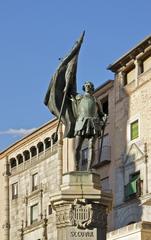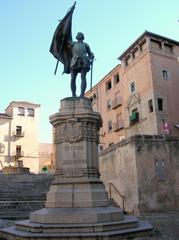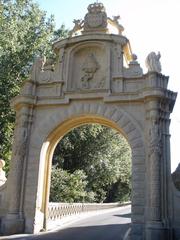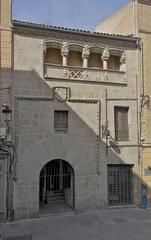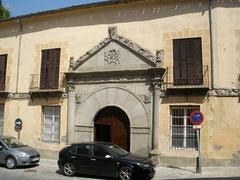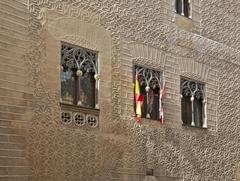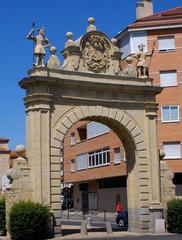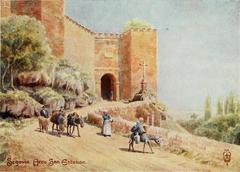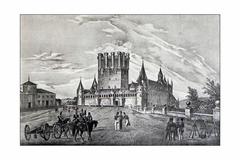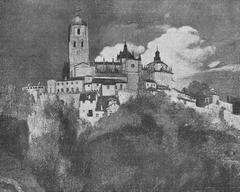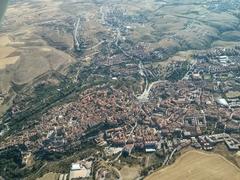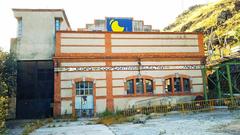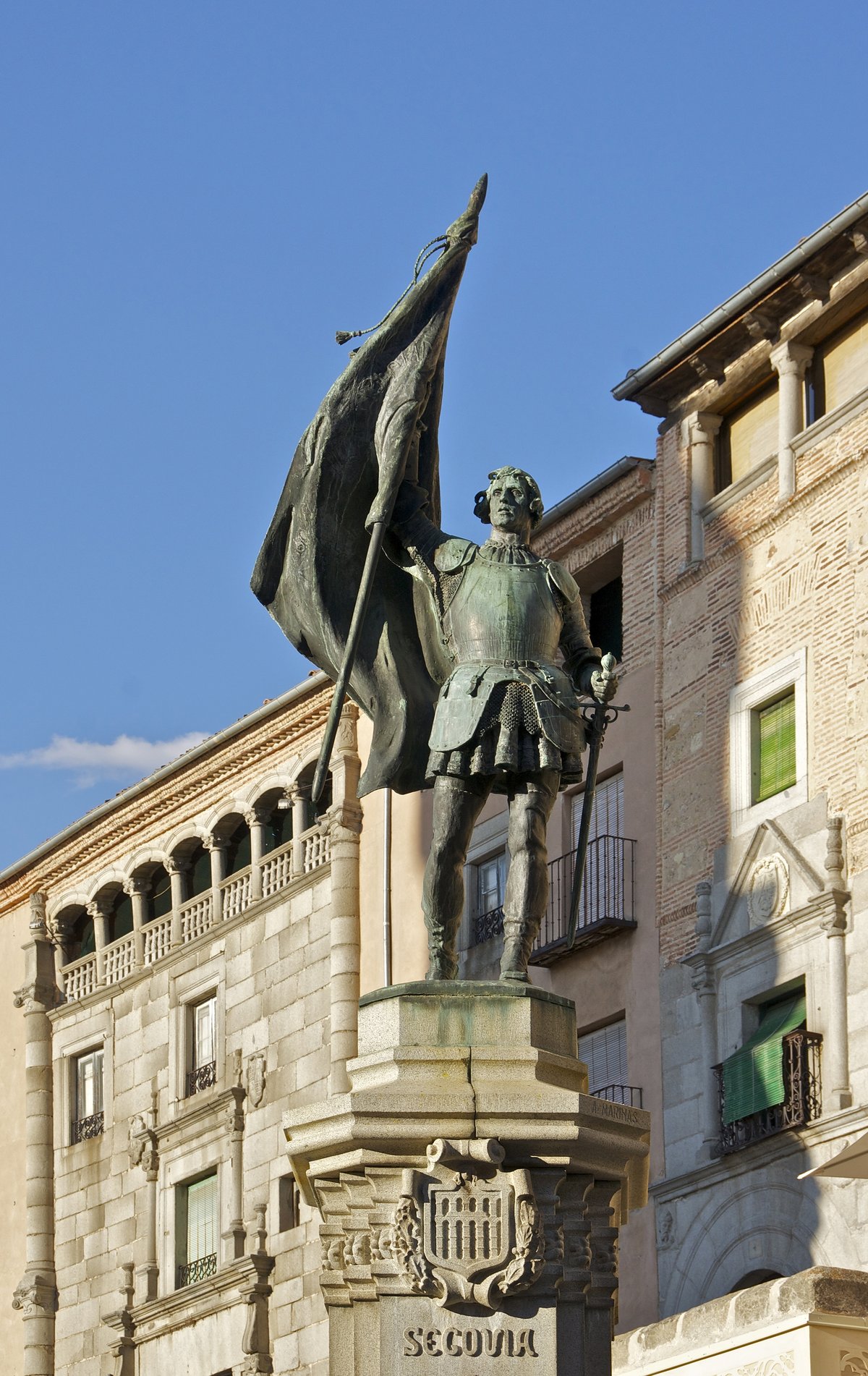
Visiting the Monument to Juan Bravo, Segovia: Tickets, Hours, and Essential Tips
Date: 14/06/2025
Introduction
Standing in the heart of Segovia’s vibrant Plaza de Medina del Campo, the Monument to Juan Bravo is a striking tribute to one of Castile’s most celebrated historical figures. Erected in 1921 to mark the 400th anniversary of Bravo’s execution, the monument commemorates his leadership during the Castilian Revolt of the Comuneros—a pivotal moment in Spain’s history. Blending artistic excellence, symbolic resonance, and community significance, the statue is a focal point for both locals and visitors, serving as a gateway to the city’s rich architectural and cultural heritage (Segovia Turismo, Britannica).
This guide covers the monument’s historical context, architectural features, practical visiting information, and tips for making the most of your visit. Whether you’re a history enthusiast, cultural traveler, or first-time visitor, understanding the legacy of Juan Bravo will enrich your exploration of Segovia.
Historical Context: Juan Bravo and the Comuneros Revolt
Juan Bravo (c. 1483–1521), a nobleman from Atienza, emerged as a leading figure in the Comuneros Revolt (1520–1521), a rebellion of Castilian cities against King Charles I’s centralized rule. Alongside Juan de Padilla and Francisco Maldonado, Bravo became a symbol of civic resistance, striving to protect local rights and autonomy from royal imposition (Britannica, Encyclopedia.com).
The revolt culminated in the Battle of Villalar, where the comuneros were defeated, and Bravo was executed. His sacrifice transformed him into a martyr for liberty and a lasting emblem of regional identity and democratic aspirations in Castile (El País).
The Monument: Artistic Features and Symbolism
Design and Setting
The Monument to Juan Bravo, designed by renowned Segovian sculptor Aniceto Marinas, stands atop a robust granite pedestal in Plaza de Medina del Campo, surrounded by historic facades and the Romanesque Church of San Martín. The bronze statue, approximately 2.5 meters tall, depicts Bravo in armor, sword raised, evoking his leadership and defiance during the revolt.
Artistic Details
- Pose: Bravo’s right arm brandishes a sword, symbolizing resistance and justice, while his left hand rests on his hip, expressing determination.
- Pedestal: The granite base, adorned with reliefs and the coat of arms of Segovia, reinforces the city’s pride and links Bravo’s story to local history.
- Reliefs and Inscriptions: Detailed reliefs illustrate scenes from the revolt, and inscriptions recount Bravo’s role and execution, transforming the monument into a powerful historical and educational landmark (Segovia Turismo, Planeta On Tour).
Cultural Significance
Local and National Symbolism
For Segovia, the monument is a living symbol of civic pride and autonomy. It is a focal point for public gatherings, commemorative events—especially on April 23, the anniversary of the Battle of Villalar—and a touchstone for local identity (Segovia City Council). Nationally, Bravo’s legacy and the Comuneros’ struggle are invoked in contemporary debates on regional rights and democratic values, with similar memorials throughout Castile (El País).
Artistic Heritage
The statue’s realism and expressive posture reflect the influence of Spanish artistic currents that emphasize historical accuracy and emotional impact. Its integration into the urban landscape invites ongoing reinterpretation through photography, art, and public discourse.
Practical Visitor Information
Location
- Address: Plaza de Medina del Campo, Segovia, Spain
- Proximity: Centrally located, steps from Plaza Mayor, the Cathedral, and the Roman Aqueduct (Wanderlog)
Visiting Hours and Tickets
- Hours: The monument is outdoors and accessible 24/7.
- Tickets: No entry fee; visiting is free at all times.
Accessibility
- Mobility: The plaza is pedestrian-friendly and wheelchair accessible, with flat, paved surfaces. Note that surrounding historic streets may have uneven cobblestones.
- Transport: Easily reached on foot from major attractions. Public buses and taxis serve the historic center, but much of old Segovia is walkable (Dong World).
Guided Tours
- Availability: The monument features in most guided walking tours of Segovia’s old town, which provide historical context and stories about the Comuneros Revolt (GPSmyCity Walking Tour).
- Booking: Free and paid tours can be booked at the Tourist Information Office near the Aqueduct or online.
Best Times to Visit and Photography Tips
- Quietest Hours: Early morning or late afternoon for softer light and fewer crowds.
- Festivals: The site is especially lively during local festivals, notably around April 23–24 and the Fiesta de San Juan y San Pedro in June (Spain Life Exclusive).
- Photography: Approach from Calle Juan Bravo for dramatic views; golden hour lighting enhances the monument’s details.
Nearby Attractions and Amenities
- Roman Aqueduct: Segovia’s iconic ancient landmark, a short walk away.
- Segovia Cathedral: A late Gothic masterpiece near Plaza Mayor.
- Alcázar of Segovia: A fairy-tale castle with panoramic city views.
- Casa de los Picos: A 15th-century mansion with a unique spiked façade.
- Church of San Martín: Adjacent to the monument, noted for its Romanesque architecture.
Dining: Numerous cafés and restaurants line Calle Juan Bravo and Calle Real, offering traditional Segovian cuisine such as cochinillo (roast suckling pig) and ponche segoviano (local dessert) (A Ticket to Take Off).
Public Facilities: Restrooms are available in nearby establishments and at the Tourist Information Office.
Tips for Visitors
- Footwear: Wear sturdy shoes, as cobblestone streets are common.
- Families: The plaza is spacious and suitable for groups and children, though some nearby streets have steps or slopes.
- Safety: Segovia is generally safe; keep belongings secure in crowded areas.
Frequently Asked Questions (FAQ)
Q: What are the visiting hours for the Monument to Juan Bravo?
A: The monument is outdoors and accessible 24/7, free of charge.
Q: Do I need tickets to visit?
A: No tickets are required; access is always free.
Q: Is the monument accessible for people with disabilities?
A: Yes, the plaza and monument area have flat, paved surfaces, though some surrounding streets have cobblestones.
Q: Are guided tours available?
A: Yes; the monument is included in most Segovia walking tours, which can be booked at the Tourist Office or online.
Q: What are the best nearby attractions?
A: Roman Aqueduct, Segovia Cathedral, Alcázar, Casa de los Picos, and the Church of San Martín.
Additional Resources
- For up-to-date events, tours, and accessibility information, visit the official Segovia tourism website.
- Explore virtual tours and images on the Segovia tourism site for planning and inspiration.
- Download the Audiala app for audio guides, digital maps, and local event updates.
Summary and Recommendations
The Monument to Juan Bravo is more than a commemorative statue—it is a living symbol of Segovia’s historical resilience and artistic tradition. Its prime location in Plaza de Medina del Campo and proximity to celebrated landmarks like the Roman Aqueduct and Cathedral make it an essential stop for any visitor. With free, all-day access and rich historical context, the monument offers an immersive experience at the intersection of art, community, and history.
For a rewarding visit, combine your stop at the monument with guided tours, nearby attractions, and local cuisine. To enhance your trip, use digital resources and follow Segovia’s official channels for the latest updates on events and cultural experiences.
